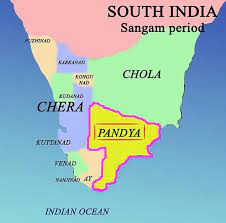The Chera dynasty was a prominent kingdom that existed in the southern part of India, particularly in the modern-day state of Kerala, from around the 3rd century BCE to the 12th century CE. The Cheras were known for their maritime trade and their contribution to the development of the Tamil language and literature. In this article, we will explore the history, culture, and achievements of the Chera dynasty.

Table of Contents
Origins and Early History of Chera Dynasty
The origin of the Chera dynasty is shrouded in mystery, with different legends and theories about its founding. Some sources suggest that the Cheras were originally a tribe of hunters and fishermen who gradually developed into a kingdom. Others believe that the Cheras were descended from the ancient Ay dynasty that ruled over parts of South India in the 2nd millennium BCE.
The earliest known reference to the Chera dynasty comes from the Greek historian Megasthenes, who wrote in the 3rd century BCE about a kingdom called Keralaputra that was ruled by a king named Senguttuvan. The Cheras were known for their wealth and prosperity, which was largely based on their control of the lucrative trade routes that linked South India with the Middle East and Rome.
Society and Culture
The Chera society was organized into different classes, with the king at the top and the common people at the bottom. The Cheras were known for their elaborate funeral customs, which involved the cremation of the dead and the erection of elaborate stone monuments to commemorate their ancestors. The Chera language was Tamil, and the Cheras were instrumental in the development of Tamil literature, particularly the Sangam literature that flourished in the 3rd century BCE.
The Chera dynasty was also known for its religious tolerance, with Buddhism, Jainism, and Hinduism all coexisting peacefully. The Cheras built many temples and shrines dedicated to various gods and goddesses, and their rulers were often known for their patronage of the arts.
Trade and Economy in Chera Dynasty
The Cheras were primarily a maritime power, with their control over the ports and trade routes giving them a significant advantage over other kingdoms in South India. The Cheras traded in a variety of goods, including spices, textiles, and precious stones, and they were particularly known for their production of high-quality pepper, which was in great demand in the Roman Empire.
The Cheras also had a well-developed agricultural sector, with the cultivation of rice, coconut, and other crops being an important source of wealth. The Chera dynasty was a decentralized kingdom, with each region and village having its own local administration and economy.
Decline and Legacy
The decline of the Chera dynasty began in the 8th century CE, when the Rashtrakutas, a powerful dynasty from the north, began to encroach on their territory. The Cheras were also weakened by internal divisions and conflicts, which led to the fragmentation of their kingdom into smaller states.
Despite their decline, the Chera dynasty left a lasting legacy in the cultural and literary traditions of South India. The Sangam literature that flourished under the Cheras remains a cornerstone of Tamil literature, and the Cheras’ contributions to the development of the Tamil language and literature are still celebrated today.
Conclusion
The Chera dynasty was a significant political and cultural force in South India for nearly a thousand years, and their influence can still be felt in the language, literature, and traditions of the region. The Cheras’ maritime trade, agricultural prowess, and religious tolerance were all important factors in their success, and their legacy continues to inspire and inform the culture and history of Kerala and Tamil Nadu.
Important Links